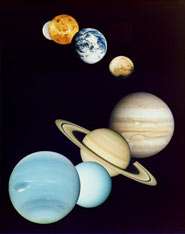December offers meteor shower and cluster of three planets

The Geminid meteor shower is usually the best of the year, but it tends to take a back seat to the Perseid shower of August. The Perseids have the advantage of a pleasant summer night, while the Geminids have a major problem in attracting spectators -- it takes dedication to wait patiently outdoors in the biting cold of a December night. At least you don't have to deal with biting mosquitoes.
This year's Geminid shower will peak on the night of Dec. 13-14. Skywatchers normally can expect to see 60-70 meteors per hour at the peak. The Geminids are slower and brighter than many other meteors, making them easier to spot before they vanish. The waning crescent moon will not interfere, but city lights will overwhelm the fainter meteors, so try to get away from artificial lights if you can. The most meteor activity will be after midnight local time, though some meteors will begin to appear as soon as the sky is completely dark.
The bright streaks will seem to come from a point called the radiant near the stars Castor and Pollux in the constellation Gemini the Twins, which gives the shower its name. The radiant will be well above the eastern horizon a few hours after sundown and will remain high in the sky for the rest of the night. The higher the radiant is above the horizon, the more meteors there will be. Try facing southeast if you have a clear view in that direction, though meteors will be visible in all parts of the sky. For details about the Geminid shower, see comets.amsmeteors.org/meteors/ … howers/geminids.html .
To stay comfortable in the frigid night, wear several layers of warm clothing and keep a thermos of hot coffee, tea or chocolate handy. If necessary, go indoors from time to time to warm up. No special equipment is needed to watch a meteor shower. Just enjoy the spectacle as the bright objects blaze across the sky.
More information about meteor showers is available at comets.amsmeteors.org/, a site sponsored by the American Meteor Society.
Planets
In a rare conjunction on Dec. 10, the planets Jupiter, Mercury and Mars will cluster very low in the east-southeast about an hour before sunrise, with the stars of the constellation Scorpius providing a sparkling background. This will be the closest conjunction of three planets visible with the unaided eye since 1974. As the predawn sky brightens, binoculars may be needed to pick out Mars, the faintest of the three.
At the beginning of the month, Mercury will be highest above the horizon, with Mars in the middle and Jupiter at the bottom. Each morning after that, Mercury will appear lower while Mars and Jupiter creep upward until the three planets form a tight group on the morning of Dec. 10. In the days afterward, Mercury will drift downward while Mars moves slightly upward. After midmonth, the orange star Antares will appear to the lower right (south) of Mars, slightly brighter than the planet and nearly the same color. Meanwhile Jupiter will climb higher than Mars to become a brilliant white "morning star."
Not to be outdone, the western sky in December will offer Venus as an "evening star," also close to the horizon. Venus will set only a half hour after the sun as the month begins but more than an hour later by month's end. By then you may be able to spot Venus above the west-southwestern horizon before any stars appear.
Bright yellow Saturn will rise in the east around 10 p.m. local time at the beginning of December and about two hours earlier by month's end. It will be highest after midnight, near the bright star Regulus in the constellation Leo the Lion. Those with telescopes will have a chance to view the planet's famous rings, which will be at their minimum tilt for the year. Even a small telescope will show Saturn's biggest moon, Titan, which is larger than the planet Mercury. Titan will be due north of Saturn on the mornings of Dec. 3 and 19, and due south of the planet on the mornings of Dec. 11 and 27.
Solstice
The sun will reach its southernmost point in the sky, called the December solstice, on Dec. 21 at 7:22 p.m. EST. This will mark the start of winter in the Northern Hemisphere and summer in the Southern Hemisphere. For the next six months, the days will be getting longer in the Northern Hemisphere. Information about the December solstice, including the human history associated with it in many parts of the world, is available at www.candlegrove.com/solstice.html .
Moon phases
The moon will be full on Dec. 4, at third quarter on Dec. 12, new on Dec. 20 and at first quarter on Dec. 27.
Source: Indiana University





















